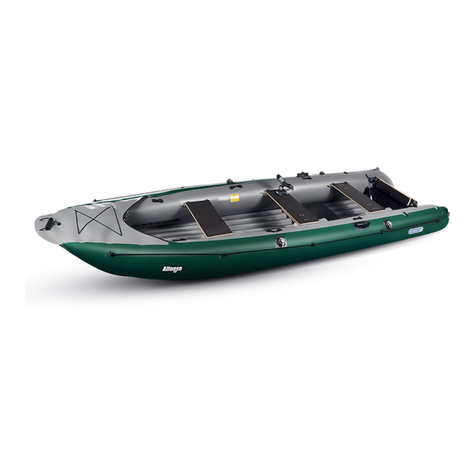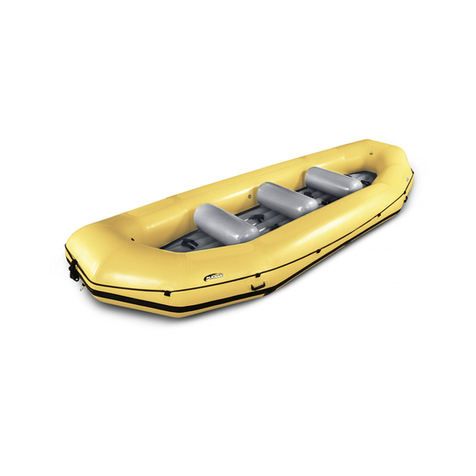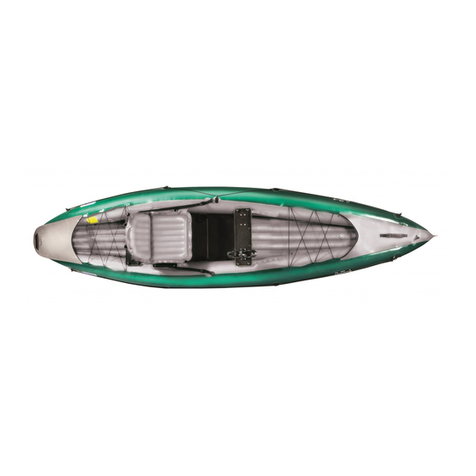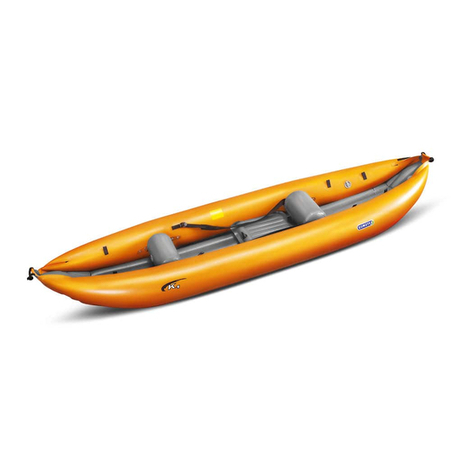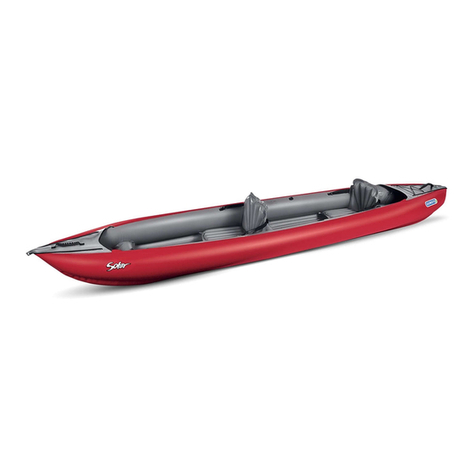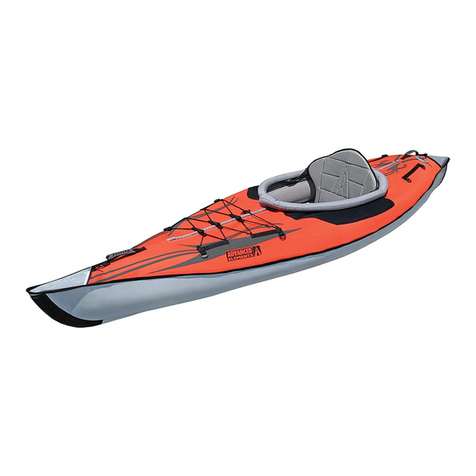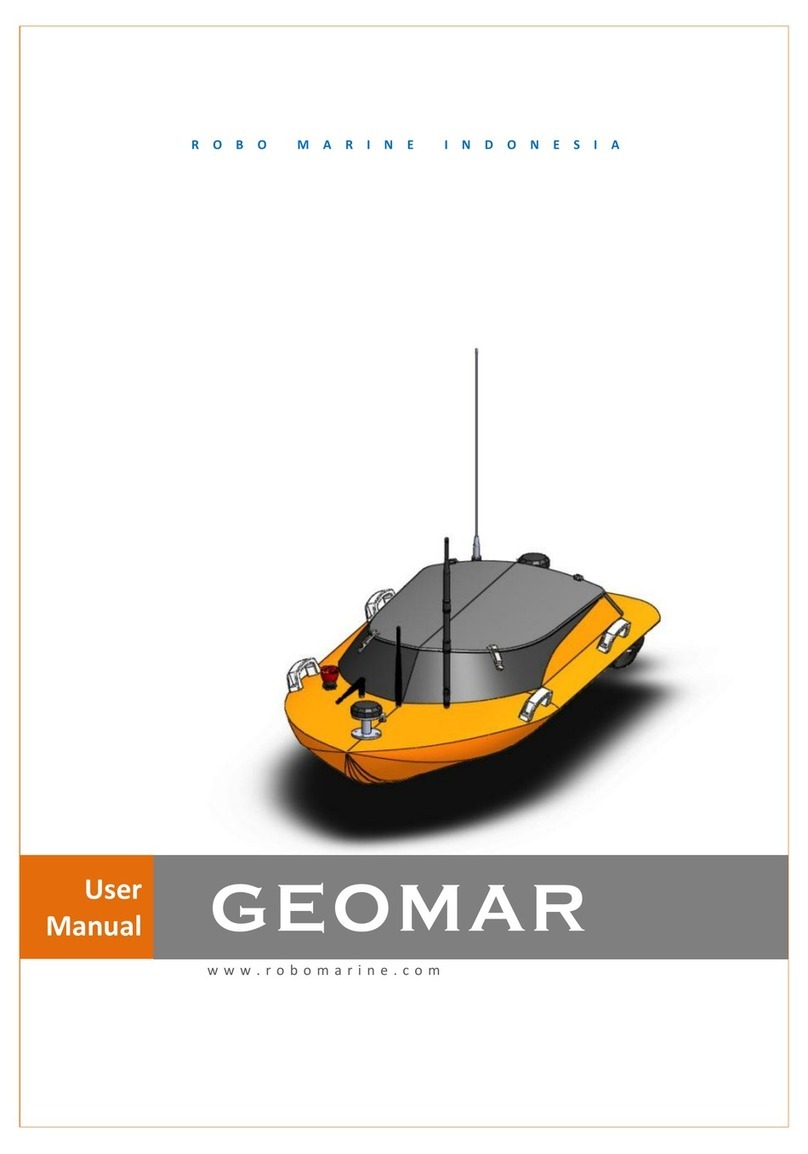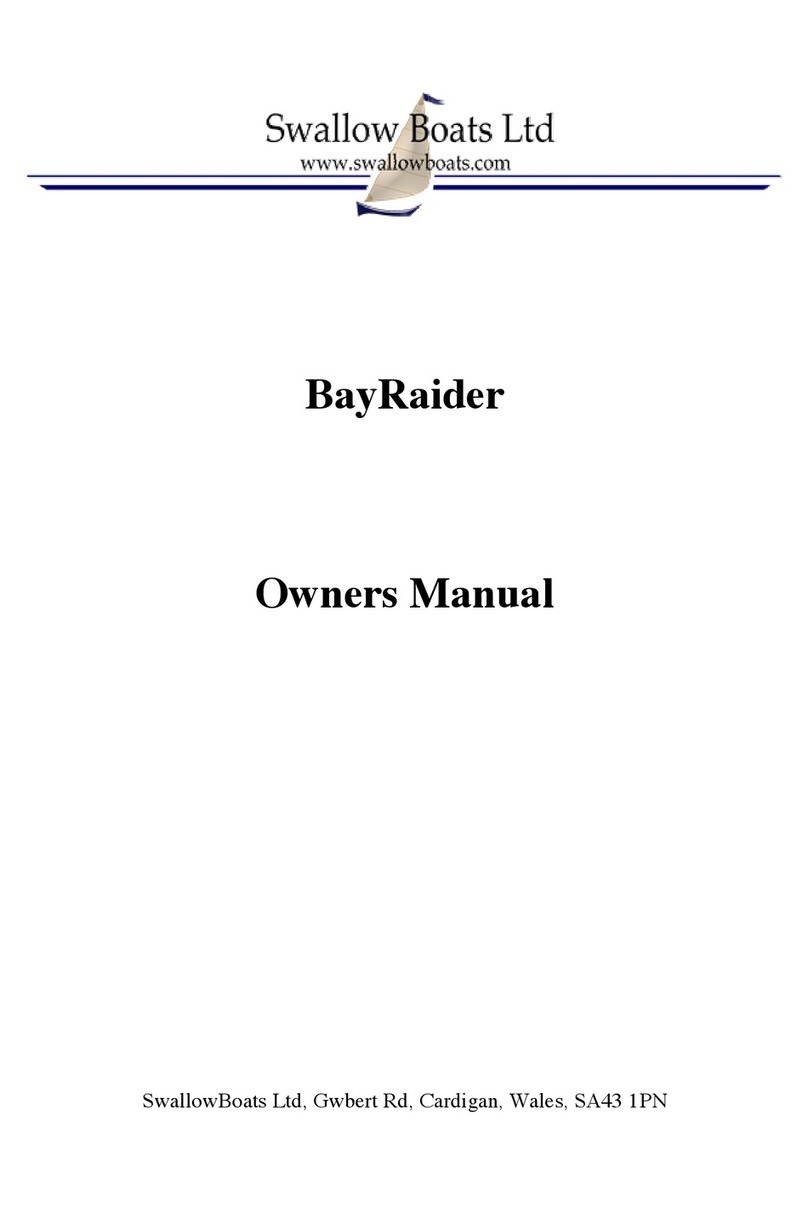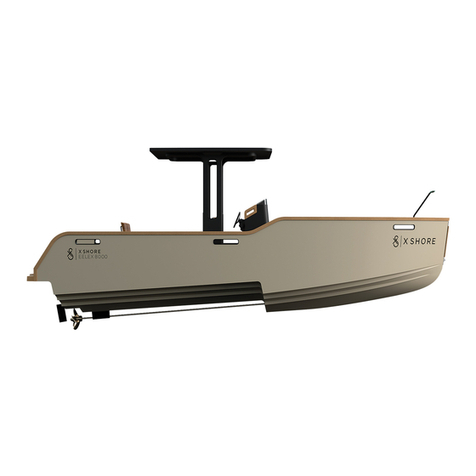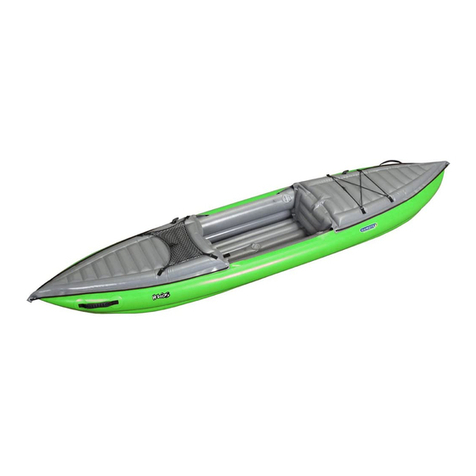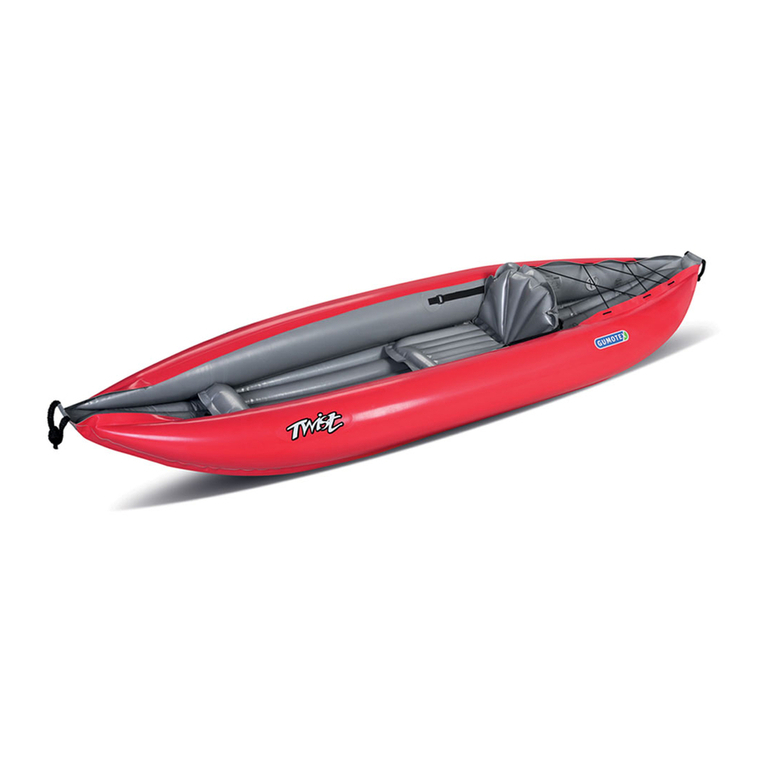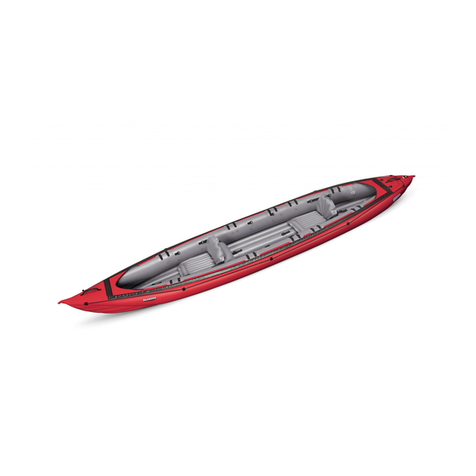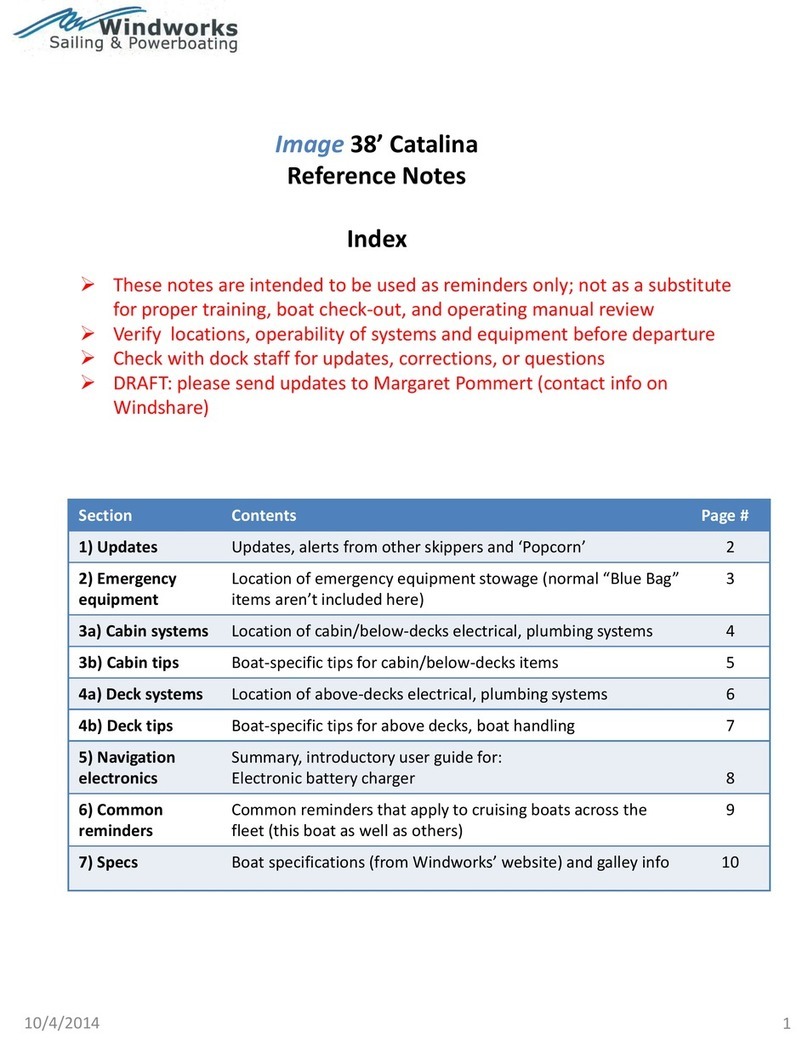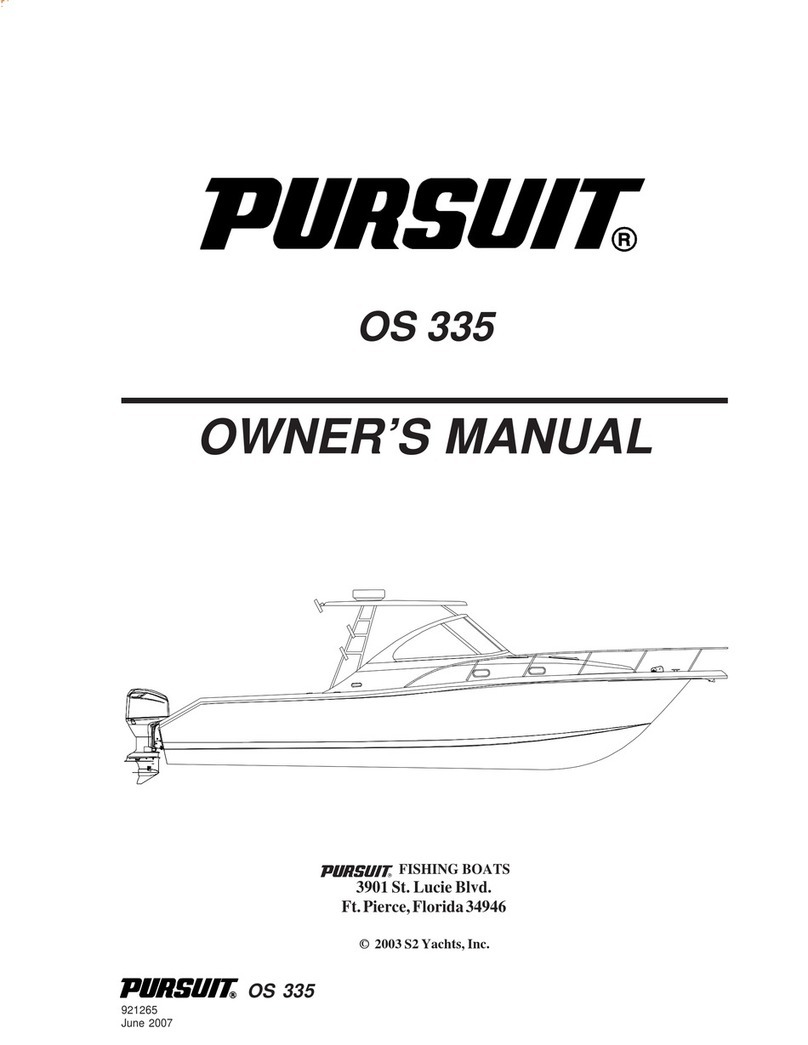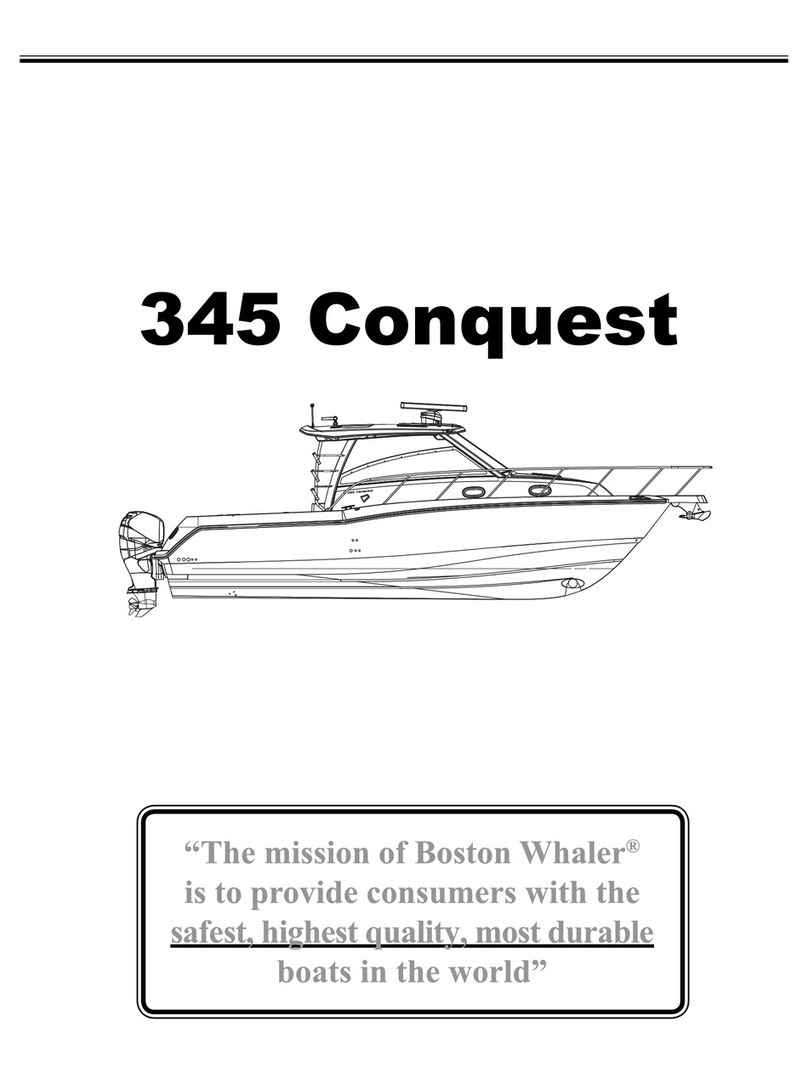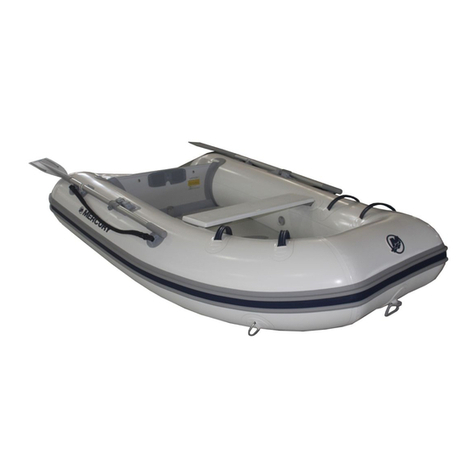
The HALIBUT kayak is designed for fishing activities. When-
ever the kayak is used on waterways, Waterway Trac Rules
should be observed. Operation of the HALIBUT a inflatable
canoe does not require any licence provided the people who
operate the canoe know the techniques of small boat opera-
tion within the scope necessary for its operation, as well as
the valid navigation rules of the particular country.
The HALIBUT kayak can be used on still or gently flowing
waters up to Diculty Grade WW 1. This is only a recom-
mended use, it always depends on the specific abilities of
the user! Use double-bladed kayak paddles with a length of
approx. 210 cm. During navigation, people must wear swim-
ming vests.
The manufacturer recommends using the boat in sucient
water condition (see Control table - draught).
ATTENTION
CAUTION:
Characteristics of Diculty Grade WW 1 – Easy:
lRegular water flow and low and regular wave forma-
tion, small rapids, easy obstacles and frequent mean-
ders with quick water flows.
ATTENTION
Remove dirt and dry the kayak before rolling up.
Deflate the seat, dismount the seat and holder boards, the
skeg-fin, and the probe holder. Open the valves and release
air from the main chambers. The deflation may be sped up
by rolling the boat towards the valves. No sharp object may
remain in the boat. Spread the deflated boat on a flat sur-
face and fold – see Fig. No. 3.
Spread the boat flat. Fold both side cylinders longitudinally
so that they do not hang over the bottom plan view. Then roll
the boat from both sides towards the centre. Fold the rolled
halves over each other and insert the folded inflatable seat
27. Skeg-fin and probe metal bracket fixture
28. Skeg-fin
29. Probe bracket
30. Fishing rod plastic holder
31. Screw with a plastic nut (see detail C)
32. Screw valve for small chambers (seats, leg rests, etc.)
33. Backrest straps
34. Seat board fixtures (see detail B)
Dry bag 100 l, compression strap for tightening the packed
kayak, plastic skeg-fin, user manual with the warranty she-
et, foam sponge, gluing kit containing glue, patches, valve
reduction, 1 replacement screw with a plastic nut, metallic
probe holder, fishing rod plastic holder, metal key for valves.
Unfold the kayak. If you intend to use the tracking fin (28),
slide it into the attachment in the bottom (27). You can also
use the fixture for fastening the probe holder (29) – detail A.
Insert the floor board on the bottom (9) for reinforcing the
boat’s bottom. Pull the seat board (7) into the fixtures (34)
on the bottom side of the inflatable seat (8) - see detail B.
Then inflate the seat (screw valve inflation – see Fig. 2). Using
screws and plastic nuts, fasten the seat (7) and holder (10)
boards into the fixtures on the cylinders (11) – see detail C.
The front and rear boards (10) can be used for fixing the rod
plastic holder thanks to the openings; there is a handle for
easier standing up on the front board. Fasten the inflatable
seat (8) by pulling the straps (33) on the backrest through
the fixtures with a plastic clip (23) on the side cylinders – see
detail D. The boat can be turned in slowly flowing water by
moving the suspended anchor in the rope loop (20).
Check the condition of the valves before inflating. Tighten the
valves with the assembly key - see Fig. 2c. Set the valves to
the OFF position.
For valve operation see Figure 2.
Inflate the air chambers in sequence:
The bottom (1) and then the side cylinders (2). Use a foot
pump or piston pump with a valve adaptor for inflating - see
Figure 2b (the adaptor is included in the glue set). Inflate
the air chambers until they are firm but not completely sti.
The air chambers should provide a feeling comparable to
squeezing a ripe orange. You can check the exact operating
pressure by using a suitable pressure gauge (optional acce-
ssory) - see Figure 2a. Below the front board, there will be
space for putting baggage, which you can secure against
falling out with the flexible rope with snap hooks (19).
ATTENTION
ATTENTION




